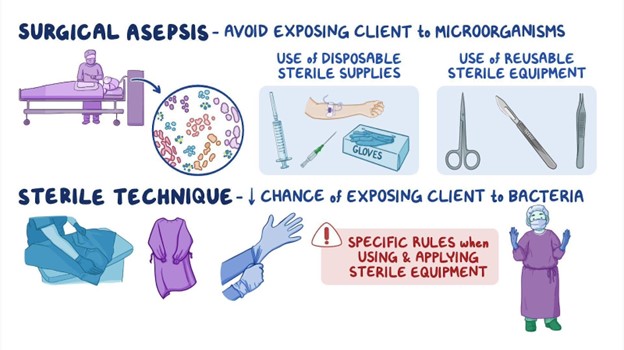A nurse is admitting a client who has a partial hearing loss. Which of the following is the priority action by the nurse?
Stand directly in front of the client.
Rephrase statements the client does not hear.
Speak using his usual tone of voice.
Determine if the client uses hearing aids.
The Correct Answer is D
Choice A Reason: This is incorrect because standing directly in front of the client is not the priority action by the nurse when admitting a client who has a partial hearing loss. Standing directly in front of the client can enhance communication, but it is not as important as assessing the client's hearing status and needs.
Choice B Reason: This is incorrect because rephrasing statements the client does not hear is not the priority action by the nurse when admitting a client who has a partial hearing loss. Rephrasing statements can improve understanding, but it is not as essential as evaluating the client's hearing level and preferences.
Choice C Reason: This is incorrect because speaking using his usual tone of voice is not the priority action by the nurse when admitting a client who has a partial hearing loss. Speaking using his usual tone of voice may or may not be appropriate, depending on the client's hearing ability and comfort. The nurse should adjust his tone of voice based on the client's feedback and response.
Choice D Reason: This is the correct choice because determining if the client uses hearing aids is the priority action by the nurse when admitting a client who has a partial hearing loss. Hearing aids are devices that amplify sound and improve hearing for people with hearing loss. The nurse should determine if the client uses hearing aids, and if so, check their function, fit, and battery life. The nurse should also ask about any other assistive devices or strategies that the client uses to communicate effectively.
Nursing Test Bank
Naxlex Comprehensive Predictor Exams
Related Questions
Correct Answer is A
Explanation
Choice A Reason: This is correct because the patient's Glasgow Coma Scale score is 9. The Glasgow Coma Scale is a tool that assesses the level of consciousness of a patient with a head injury by measuring three parameters: eye opening, verbal response, and motor response. The patient's eye opening score is 3 (opens eyes to verbal command), verbal response score is 4 (confused speech), and motor response score is 2 (withdraws from pain). The total score is the sum of these three scores, which is 9.
Choice B Reason: This is incorrect because the patient's Glasgow Coma Scale score is not 11. To get a score of 11, the patient would need to have a higher motor response score, such as 4 (withdraws to touch) or 5 (localizes to pain).
Choice C Reason: This is incorrect because the patient's Glasgow Coma Scale score is not 15. To get a score of 15, the patient would need to have the highest scores for all three parameters, such as 4 (opens eyes spontaneously), 5 (oriented speech), and 6 (obeys commands).
Choice D Reason: This is incorrect because the patient's Glasgow Coma Scale score is not 13. To get a score of 13, the patient would need to have a higher verbal response score, such as 5 (oriented speech).
Correct Answer is C
Explanation
Choice A Reason: Obtaining the client's blood glucose every 12 hr is not enough, as the nurse should monitor it more frequently, at least every 4 to 6 hr, to prevent hyperglycemia or hypoglycemia. TPN is a high-glucose solution that can affect the blood sugar levels.
Choice B Reason: Changing the IV site dressing every 4 days is not enough, as the nurse should change it daily or as needed to prevent infection. TPN is a high-risk solution that can introduce microorganisms into the bloodstream.
Choice C Reason: This is the correct choice. Changing the IV tubing every 24 hr is recommended to prevent infection and maintain sterility. TPN is a complex solution that can support bacterial growth and contamination.
Choice D Reason: Weighing the client every other day is not enough, as the nurse should weigh the client daily to evaluate fluid balance and nutritional status. TPN can cause fluid retention or depletion, as well as weight gain or loss.

Whether you are a student looking to ace your exams or a practicing nurse seeking to enhance your expertise , our nursing education contents will empower you with the confidence and competence to make a difference in the lives of patients and become a respected leader in the healthcare field.
Visit Naxlex, invest in your future and unlock endless possibilities with our unparalleled nursing education contents today
Report Wrong Answer on the Current Question
Do you disagree with the answer? If yes, what is your expected answer? Explain.
Kindly be descriptive with the issue you are facing.
